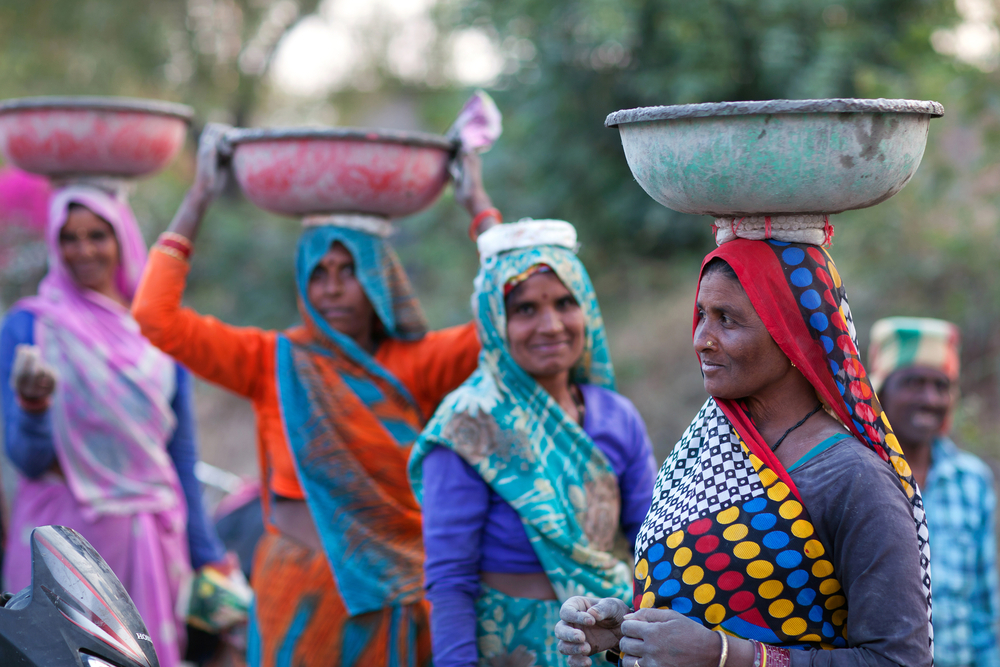This year’s Economic Survey has thrown up an intriguing statistic: 60 per cent of women in India in the productive age bracket of 15-59 years are engaged in full-time housework. This does not augur well for a nation chasing its $5-trillion-economy goal. All-encompassing growth and gender parity are paramount for any economy to realize its full potential. With India striving to become a $5 trillion economy by 2025, it cannot afford to leave half of its productive workforce behind.
India’s female labour force participation rate — calculated as the share of women who are employed or are seeking work as a proportion of the working age female population — stands distressingly low at 23.4 per cent (2019) as per the World Bank (modelled ILO estimates). Juxtapose this statistic with neighbouring nations like Bhutan (58.3 per cent), Nepal (81.6 per cent), China (60.63 per cent), Bangladesh (36.14 per cent), Myanmar (47.54 per cent) and Sri Lanka (34.75 per cent). While slightly more women work in Pakistan than in India (24.09 per cent and 23.4 per cent, respectively), Pakistan’s female labour force participation rate is escalating as India’s is flagging. The Economic Survey also found that India’s female labour force participation declined by 7.8 percentage points, from 33.1 per cent in 2011-12 to 25.3 per cent in 2017-18. A comparison of India’s female labour force participation rates with the BRICS countries is not encouraging either.
Why have women in India been dropping out of the labour force in large numbers?
The decision and ability of women to participate in the labour force are the consequence of a complex interplay of varied economic and social factors that interact at the household and at the macro level. Economic literature suggest that some of the most important drivers include education, fertility rates and the age of marriage, marital status, household income, religion, caste, cyclical effects and the degree of urbanization. Socio-cultural norms influencing the public role of women continue to affect labour force participation outcomes.
Multiple factors on the supply and demand side influence female labour force participation in India. On the supply side, economists have found a distinct U-shaped curve between the number of years of education and female labour force participation rates. At extremely low levels of education and income, women have no option but to join the workforce and support their households. But as their male counterparts in the family start earning, women tend to pull out of work in the formal economy to give more attention to household activities.
It is the women in the middle of the pack — those who have some schooling or have completed only high school — who are pushed by the pressure to stay at home and by the lack of jobs matching their intermediate levels of education. It is only at higher levels of education (graduate and above) and income that women re-enter the workforce through well-paying jobs that adequately match their educational levels and skill sets. In some communities, there may be a taboo attached to women working outside of their homes, especially if it involves doing ‘menial’ work. This increases pressures on women to drop out.
On the demand side, women’s fundamental duties confine them to the household. They are forced to take up work during a financial crisis, but they must do so in addition to their familial duties. So they move into the labour force only as supplementary workers.
There is no doubt that India has taken strides in improving access to education for girls — the rising enrolment rate in secondary schools and colleges is testimony to that. However, the nature of post-liberalization economic growth has been peculiar in the sense that it has failed to create jobs in large numbers in sectors that could readily absorb women, especially those from rural areas. Living standards witnessed a drastic improvement as a result of rise in household incomes but it has also reduced women’s participation in the labour force, especially in subsidiary activities due to a shift in preferences. Women’s contribution to the economy often remains undocumented or unaccounted for in official statistics.
Women continue to face countless barriers to enter the labour market. They face manifold challenges related to access to adequate employment opportunities, choice of work, safety at the work place, hospitable working environment, security of tenure, parity of wages, discrimination and, most importantly, harmonizing the trade-off between the burdens of work and family.
No single policy prescription can be proposed to advance labour market outcomes for all women. Unique initiatives such as ‘Skill India’, ‘Make in India’ and new, gender-based quotas can spur change. But the need of the hour is to invest heavily in skill training and job support. Can we do it?
Views expressed are personal











